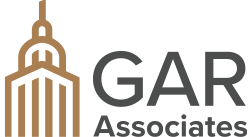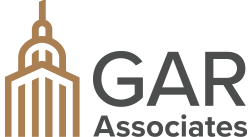What do the housing markets in Austin, Buffalo, Los Angeles, Rochester and Oklahoma City have in common? Okay, so the headline gives it away.
In these real estate markets, sellers are asking a lot more for their homes in spring 2021, compared to a year ago. This is based on a recent housing market update provided by the research team at Realtor.com. Their report offered real estate insights for the nation as a whole, as well as the 50 largest U.S. metropolitan areas.
According to the report:
“Listing prices in the 50 largest metros grew by an average of 12.1% year-over-year with some markets seeing listing prices grow by nearly triple that amount. Topping the list was Austin where listing prices were up 39.8%, followed by Buffalo, N.Y. (+28.3%) and Los Angeles (+24.8%).”
In most cases, the increase in seller asking prices is fueled by a decline in available inventory. Many real estate markets across the U.S. currently favor sellers over buyers, due to tight supply conditions and steady demand.
Housing Markets Where List Prices Have Risen the Most
We sorted their data to find out where real estate listing prices have increased the most, over the past year or so. In this context, the “listing price” refers to what the seller is asking for, when posting the property on Realtor.com. A significant year-over-year increase indicates a hot housing market with strong competition among buyers.
As mentioned in the above quote, the real estate markets in Austin, Buffalo and Los Angeles topped the list of metro areas where property listing prices have increased the most. Rochester, N.Y. and Oklahoma City housing markets rounded out the top five. Honorable mentions go to Atlanta, Charlotte and Detroit, which also posted big gains.
Here’s a closer look at the five real estate markets with the biggest increase in listing / asking prices.
Note: The percentages shown beside each metro area indicate how much the median list price increased from March 2020 to March 2021.
1. Austin-Round Rock, Texas (+39.8%)
If you follow real estate market trends, the inclusion of Austin, Texas on this list should come as no surprise. The Austin housing market has been red-hot during the past few years, and things have only heated up in 2021.
According to the Realtor.com report, the median listing price for homes within the Austin-Round Rock metro area housing market climbed by nearly 40% over the past year or so. That was the biggest year-over-year increase of all 50 metro areas included in this particular report.
The home-price gains within the Austin real estate market are the result of two major influencers. The population is growing by leaps and bounds, while housing inventory has fallen sharply. In other words, the demand for homes far exceeds the available supply.
The Austin-Round Rock-Georgetown metro area population grew by nearly 30% from 2010 to 2019, and it continues to grow in 2021. That’s a demand driver. On the supply side, the total number of active listings within the Austin area real estate market dropped by -72.7% from March 2020 to March 2021 (according to Realtor.com). That’s a major decline in inventory, and it makes things more challenging for buyers.
It’s no wonder sellers in the area are feeling confident about their asking prices. I would feel the same way, if I were selling a home in the Austin area.
2. Buffalo-Cheektowaga-Niagara Falls, N.Y. (+28.3%)
The Buffalo area real estate market has also experienced a major decline in the number of homes listed for sale. Based on the report cited above, total active listings dropped by -46.6% over the past year or so. In other words, the Buffalo-area housing market shrank by nearly half in one year’s time.
With all other things being equal, this kind of trend puts upward pressure on home prices. And that’s exactly what we are seeing within the Buffalo-Cheektowaga-Niagara Falls metro area housing market. The median listing price in the area shot up by 28.3% from March of last year to March 2021.
Interestingly, population change is less of a factor for this metro area. Unlike the Austin area mentioned above (which is growing rapidly), the population of Buffalo, New York has actually dipped slightly over the past decade. But the Buffalo area real estate market does have a very low level of housing supply right now. This, combined with increased buyer demand among the local populace, has led to higher and higher list prices.
3. Los Angeles-Long Beach-Anaheim, Calif. (+24.8%)
Los Angeles is another hot housing market in 2021, with buyers competing for limited inventory. Of course, it also happens to be a vast and sprawling market, with conditions varying from one city to the next. But overall, the Los Angeles-Long Beach-Anaheim metro area has a highly competitive real estate market in 2021.
The median list price for the L.A. area housing market rose by 24.8% during the 12-month reporting period.
The Los Angles metro area has also experienced a decline in property listings over the past year, though not as severe as real estate markets like Atlanta, Austin and Detroit. Across the L.A. metropolitan area, total active listings declined by -19.7% during the March-to-March reporting period.
This reduction in inventory, along with a steadily growing population, has boosted home prices all across the Los Angeles housing market. According to Zillow, the median home value has increased by around 10% in cities like Anaheim, Long Beach and Los Angeles.
4. Rochester, N.Y. (+20.9%)
Another New York housing market makes an appearance on our list. Sellers within the Rochester real estate market are also asking more for their homes in 2021, compared to last year. About 21% more, when measured by the median listing price.
Here again, inventory reduction has played an influencing role. Total active real estate listings in the Rochester area fell by -47.6% during the 12-month period ending in March 2021. That’s a significant reduction, and it comes at a time when the demand for homes remains steady.
Despite the price growth of the past year, the Rochester housing market is still highly affordable relative to local incomes. Zillows reports a median home value of around $175,000, as of April 2021. That’s lower than the national median, and one of the lowest among the nation’s major metro areas.
But home prices are still rising within the Rochester, New York real estate market, so buyers might want to have a sense of urgency.
5. Oklahoma City, Okla. (+20.7%)
Note the pattern here: The Oklahoma City real estate market has also experienced a sharp decline in active property listings, and sellers are now asking more for their homes. This is the story for many cities across the U.S. in 2021, to varying degrees.
According to the Realtor.com report, total active listings in Oklahoma City dropped by -61.9% from March 2020 to March 2021. Demand has remained steady, when measured by the number of home sales in the area. So within the Oklahoma City housing market, the ongoing rise of home prices is mostly driven by inventory reduction.
The median list price for this market rose by 20.7% over the past year or so.
In April of 2021, Zillow reported: “The typical home value of homes in Oklahoma City is $156,689 … values have gone up 10.0% over the past year.”
Honorable Mentions: Atlanta, Detroit and Charlotte
If we had continued this list a few more places, the real estate markets of Atlanta, Detroit and Charlotte would have made the cut. All three of these metro areas have experienced a significant increase in real estate list prices over the past year or so.
Here’s how the median listing price changed for these three housing markets, year over year:
- Atlanta-Sandy Springs-Roswell, Ga. (+19.7%)
- Detroit-Warren-Dearborn, Mich. (+19.2%)
- Charlotte-Concord-Gastonia, N.C.-S.C. (+18.3%)
These real estate markets have something else in common, as well. In Atlanta, Detroit and Charlotte, housing supply has dropped sharply over the past year. According to Realtor.com, all three of these metro areas have seen a drop in active listings that ranges from -55% to -65%. So buyers will have to work harder in 2021, to find a property that meets their needs.
Published by HBI




